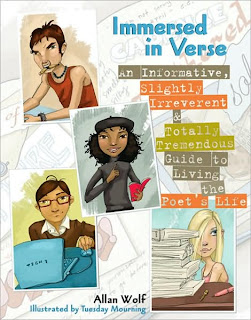“Julie,” by Jean Craighead George is a fascinating story that is sequel to the Newbery Award winning novel “Julie of the Wolves.”

In “Julie of the Wolves” author Jean Craighead George introduced readers to a young Eskimo girl with two names: Miyax, and Julie. Miyax is her Yupick name, and Julie is her English name. Miyax ended up lost in the barren wilderness of Alaska. To survive she befriended a wolf pack, and the wolves brought her food.
When Miyax discovered that her father, Kapugen, who she had previously thought to be dead, was alive and living in a nearby village, she decided that it was time to leave the wilderness and her wolf pack and return to live with humans.
But Miyax’s time in the wilderness has changed her in many ways. Now she no longer longs for the life of the gussaks, the white people who have come to live in the Arctic. Instead she wants to live in the traditional way that Eskimos have lived for thousands of years.
When she comes to Kapugen’s home, though, she discovers that her father has also changed. He is not the same father that she knew when she was a little girl, the father that taught her about how he lived with the wolves himself.
Kapugen has married a gussak, a red haired American woman from Minnesota. He has also adopted many ways of the white people. He has a radio, and has replaced his sled dogs with a snow mobile. Most importantly, he has a plane. To her horror Miyax recognizes the plane as the very one from which a pilot, her own father, shot Amaroq, the leader of the wolf pack she had befriended.
Kapugen has an industry now. He is raising musk oxen for their thick fur. The Eskimo villages harvest the fur and sell it to make an income to support themselves. But wolves will prey on the musk oxen, especially since the caribou still haven’t come. Kapugen shot Amaroq to protect his musk oxen. He didn’t realize that he was a friend of Miyax.
At first Miyax feels that Kapugen has changed too much, and she wants to return to the wilderness to live with her wolf pack again. But she realizes that Kapugen is her father, and that he must do what he feels is best to protect the village industry. The village needs the money that the musk oxen bring in, because the caribou still have not come, and without the musk oxen money the villagers would starve.
Unfortunately, the lack of caribou is also a problem for Julie’s wolf pack. The wolves are now being led by Kapu, Amaroq’s son. This wolf is named after Kapugen, Julie’s father. The wolves have followed her to the village, and Miyax is afraid that they will attack the musk oxen if they get hungry enough.
When one of the musk oxen is killed by Kapu’s wolf pack it is the final straw for her father. He is determined to kill the wolves, even though he knows that they helped Julie when she was lost in the wilderness. Julie finally gets her father to relent, but only on one condition. She must lead the wolves away from the village, and they must not return.
So Julie sets out into the wilderness again. She must find a place where the wolves will have plenty of food. If she can’t find such a place, or if the wolf pack won’t stay there, then they will be in great danger if they ever return to Kapugen’s village again.
“Julie” is the perfect continuation of the series. I loved the way that Jean Craighead George further developed the theme that began in “Julie of the Wolves.” The overwhelming effect of the series is to explore the differences between the traditional Eskimo way of life and the encroaching white culture. The differences between them are dramatic, but both Jean Craighead George, and her strong character Julie manage to balance the two forces admirably.
The story line in “Julie” has both tension and beauty. In this second book Julie finds a young man named Peter, who is a much better replacement for Daniel, her former child husband. This time Julie will wait until she is older before marrying Peter, adopting one of the ways of the white people. Throughout the story Julie uses some ways of the gussaks, and some ways of the Eskimo people. By mixing both she is able to find the perfect life for herself.
The landscapes in “Julie” are also beautiful. I think that Jean Craighead George developed the setting of the story much more thoroughly in this sequel than she did in her first book “Julie of the Wolves.” This may be in part because the landscape of this sequel is much richer than the barren wilderness of the first book. Also “Julie” covers the seasons of the Arctic North in much better detail, from the frozen blizzards of winter to the breakup and puddles of the Arctic summer.
If you have read “Julie of the Wolves,” then I can assure you that you will enjoy “Julie” as well. This beautiful sequel is first rate, and exactly the kind if high quality writing that one can expect from author Jean Craighead George.
Inkweaver Book Rating: Plot
Plot
 Characters
Characters
 Presentation
Presentation Overall
Overall
 “The Escape from Home” by Avi is book one in the two part “Beyond the Western Sea” series. This amazing historical fiction adventure explores the experiences and feelings of three children as they leave their homelands and set off for America, the New World.
“The Escape from Home” by Avi is book one in the two part “Beyond the Western Sea” series. This amazing historical fiction adventure explores the experiences and feelings of three children as they leave their homelands and set off for America, the New World.
















